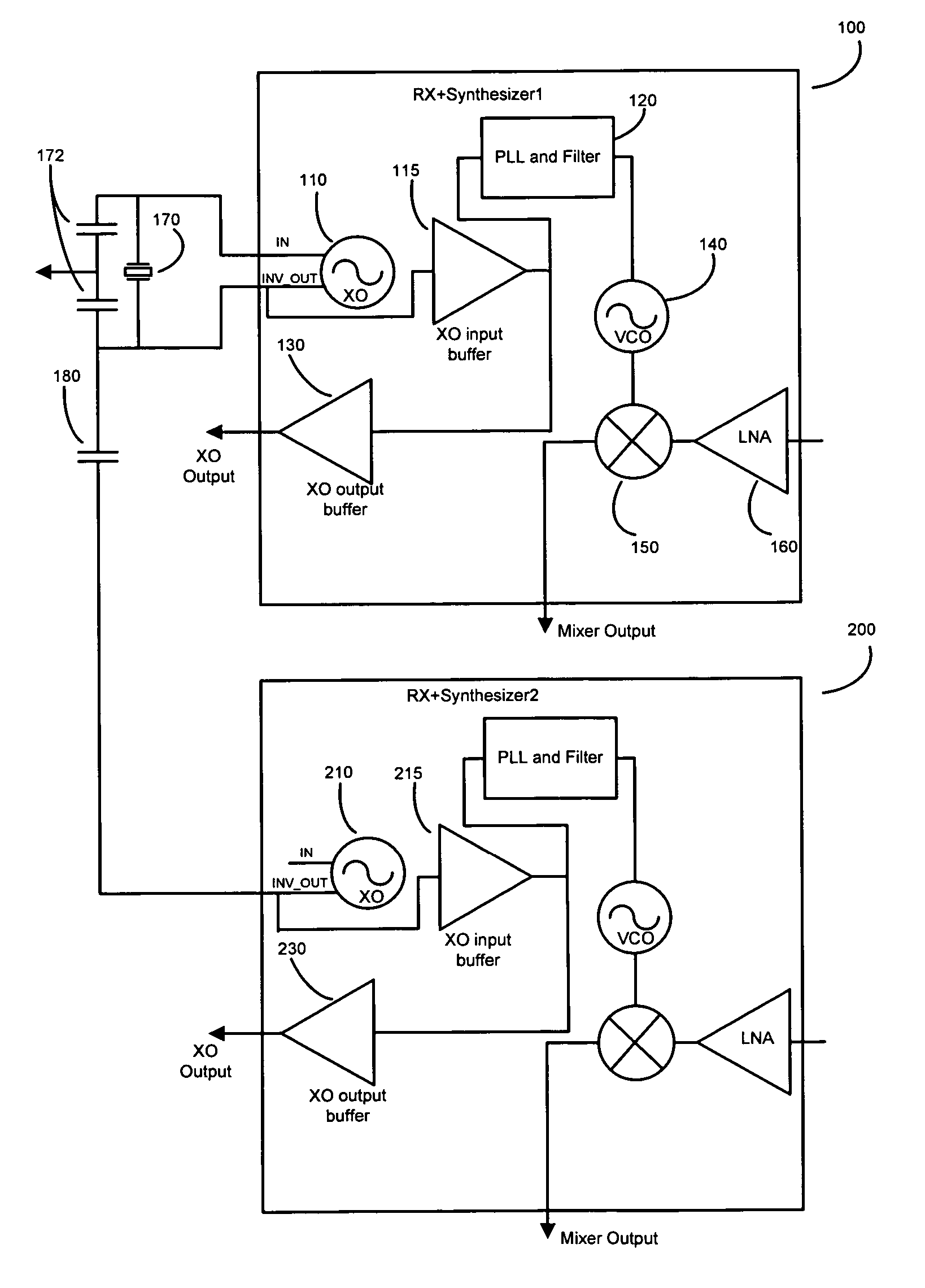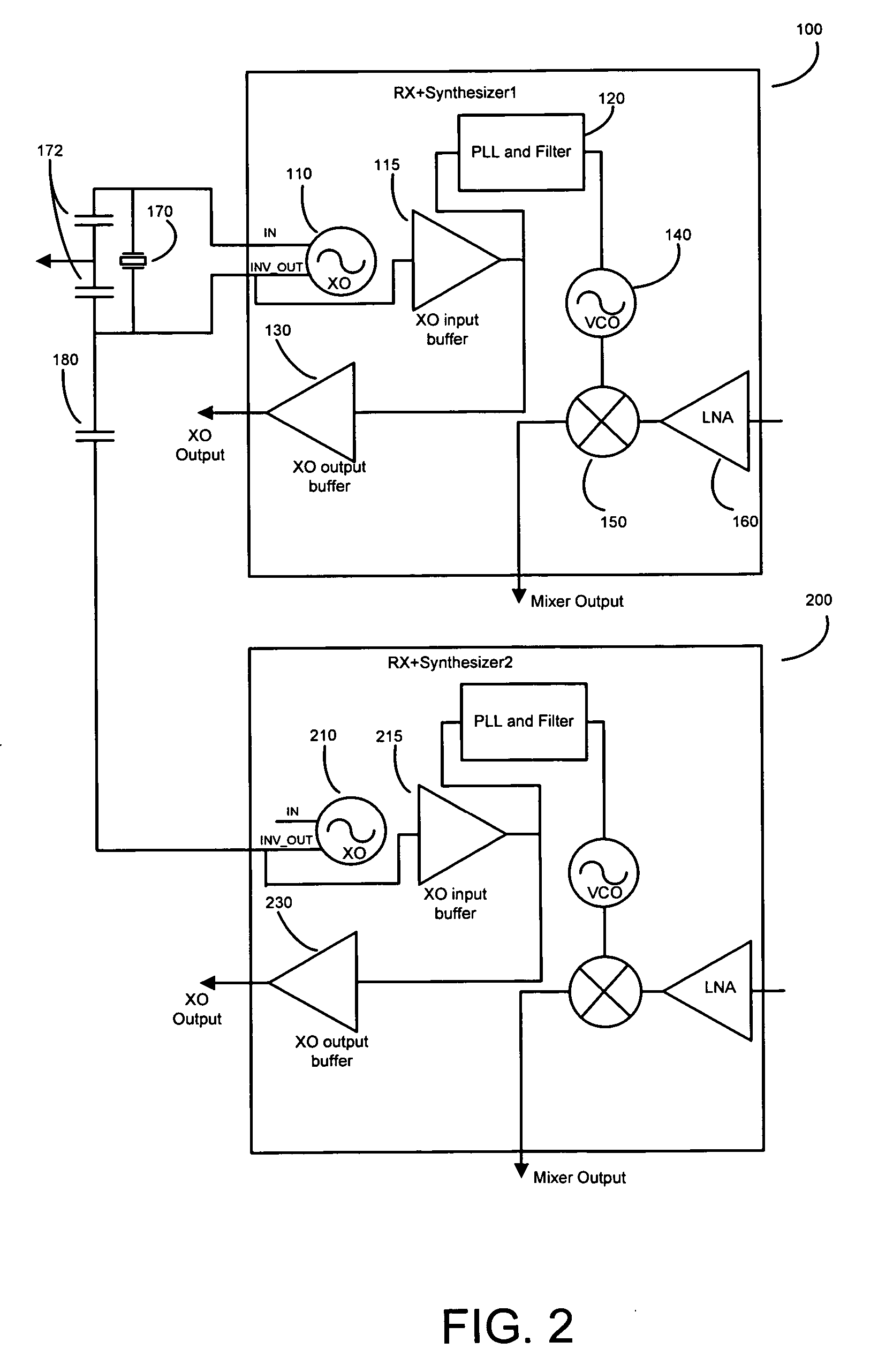Oscillator coupling to reduce spurious signals in receiver circuits
a receiver circuit and oscillator technology, applied in the field of oscillators, can solve the problems of system damage, interference of the harmonics of buffered signals, etc., and achieve the effect of high input impedance and disabling the oscillator
- Summary
- Abstract
- Description
- Claims
- Application Information
AI Technical Summary
Benefits of technology
Problems solved by technology
Method used
Image
Examples
Embodiment Construction
[0012]FIG. 2 shows a block diagram coupling an oscillator according to the present invention. Two receiver circuits are shown, master 100 and slave 200. Master 100 comprises crystal oscillator 110, phase-locked loop (PLL) and filter circuit 120, crystal oscillator (XO) input buffer 115, voltage controlled oscillator (VCO) 140, mixer 150 and low noise amplifier (LNA) 160. The crystal oscillator output buffer 130 would be used in the prior art method of coupling the oscillator signal to a second receiver. Capacitors 172 provide the capacitance to achieve the necessary requirement that the overall loop gain has zero (or 360) degrees phase shift at the oscillation frequency. The crystal 170 is connected such that it forms part of the feedback impedance of the inverting amplifier in the crystal oscillator circuit 110, which operates in a non-saturating linear or near linear mode.
[0013] Oscillator 110 drives receiver 200 through capacitor 180, which isolates the direct current bias of os...
PUM
 Login to View More
Login to View More Abstract
Description
Claims
Application Information
 Login to View More
Login to View More - R&D
- Intellectual Property
- Life Sciences
- Materials
- Tech Scout
- Unparalleled Data Quality
- Higher Quality Content
- 60% Fewer Hallucinations
Browse by: Latest US Patents, China's latest patents, Technical Efficacy Thesaurus, Application Domain, Technology Topic, Popular Technical Reports.
© 2025 PatSnap. All rights reserved.Legal|Privacy policy|Modern Slavery Act Transparency Statement|Sitemap|About US| Contact US: help@patsnap.com



